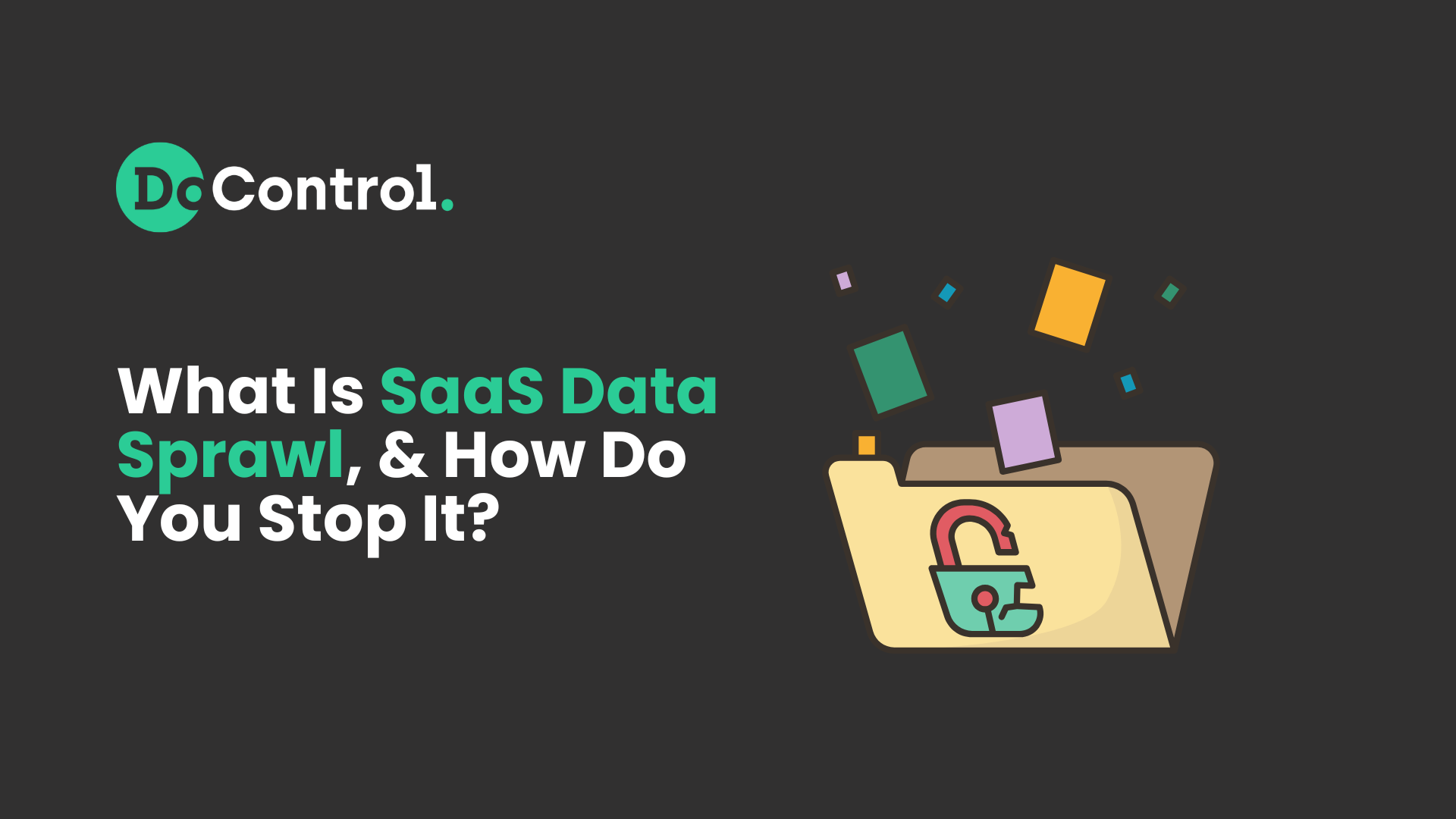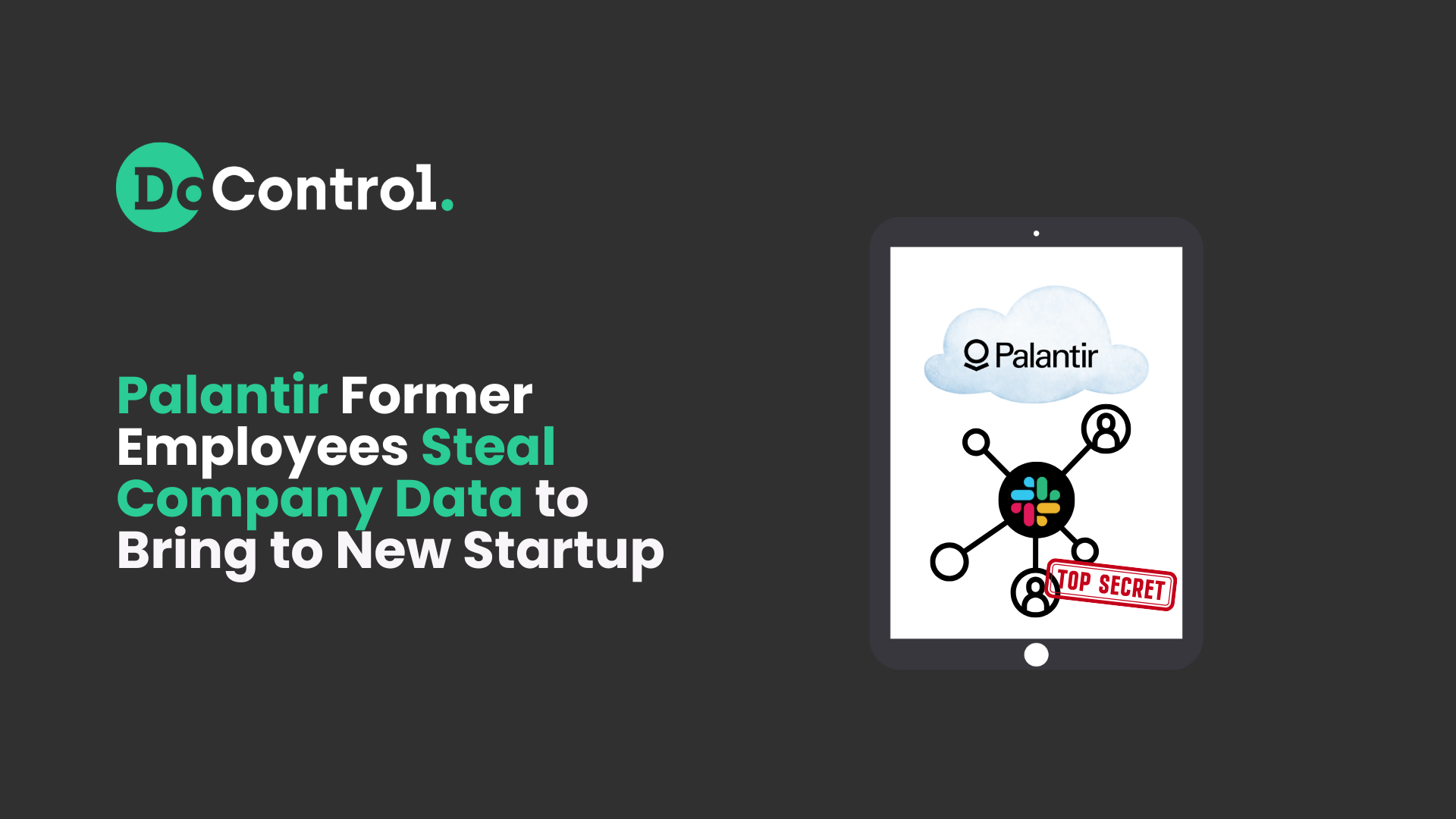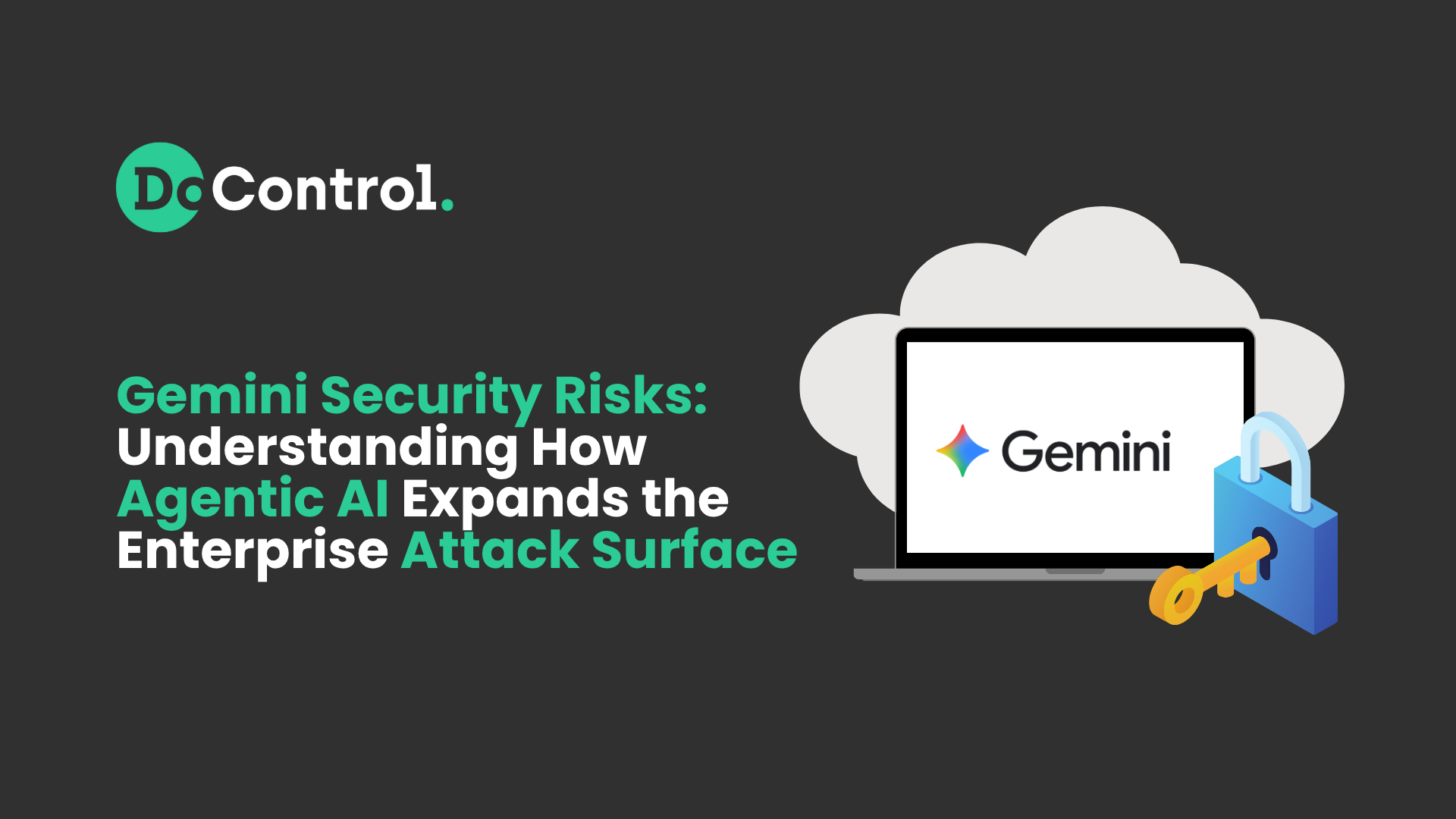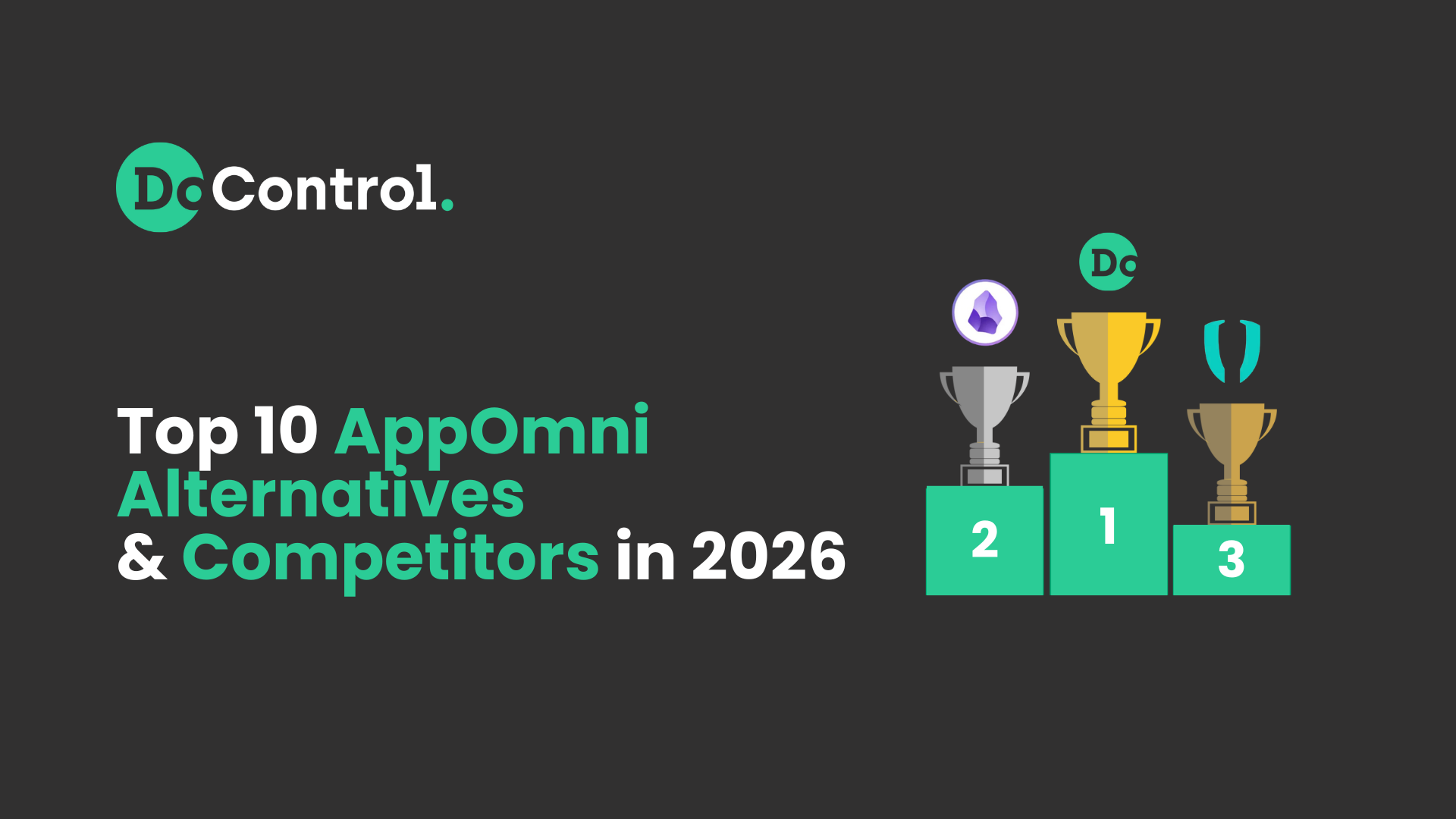
SaaS is everywhere – and we mean everywhere – in 2025. Which means…so is your data. While the adoption of SaaS apps fuels innovation, it simultaneously introduces an invisible problem for security leaders: SaaS data sprawl.
SaaS data sprawl occurs when organizations lose control over the growth and usage of their cloud applications, resulting in uncontrolled data storing, accidental public data exposure, integration of shadow AI tools, and more.
When people think of “SaaS Sprawl,” they often focus only on the number of applications. In reality, SaaS Sprawl goes beyond that – it also includes the growth, movement, and sharing of the data within those applications.
Sensitive information can flow into unsanctioned apps, access permissions remain unchecked, and manual incident investigation and clean up drain the security team’s resources and budget in the background.
SaaS adoption isn't going anywhere. According to Gartner, SaaS spend continues to grow by 15-20% annually, as organizations maintain an average of over 125 different SaaS applications totaling $1,040 per employee annually. The scariest part? IT typically is aware of only a third of those due to decentralized ownership and sourcing.
The sprawl is real.
In this article, you’ll learn what SaaS data sprawl is, the risks it poses to your organization, and how to stop it – protecting your time, your teams, and your budget while strengthening SaaS data security.
What Causes SaaS Sprawl to Happen?
SaaS sprawl doesn’t happen overnight, it’s the byproduct of convenience meeting a lack of governance continuously and overtime. For CISOs and IT leaders, these are the most common culprits driving SaaS data sprawl:
Shadow Apps and Shadow AI
Teams often adopt new SaaS apps – or AI tools – without IT approval. These integrations allow AI tools to "connect" with core business systems – like Google Workspace and Slack – accessing sensitive data, reading user content, and performing actions on behalf of employees.
This introduces a new class of shadow apps: AI-powered tools and applications that are installed without IT or security approval and operate outside traditional governance models.
Employees may grant these tools broad access – such as permission to read emails, manage calendars, or coordinate meetings – all with little understanding of what they’re authorizing. This use of AI creates a brand new class of third-party risk – one with way too many permissions and absolutely zero visibility.
Public Sharing of Data
Files, dashboards, and links that are shared publicly without proper monitoring often become uncontrolled data leaks. Many SaaS tools default to public sharing, and employees rarely realize the security implications.
In Google Workspace environments, employees share documents with “Anyone with the link can access” sharing permissions. This is simply for convenience, as they don't want to continue to grant the right permissions to every single person who tries to open the file if they’re sharing it via Google or Slack. Unfortunately, this ‘convenience hack’ is one of the most common breach vectors.
Lack of Identity Management
Without a centralized identity provider, SSO solution, or identity management platform, user credentials are scattered across dozens of apps and insider threats can run amuck. Identity is the new perimeter, and it needs to be protected as such.
When organizations don’t know who in their company is doing what, or if a particular identity was hacked or compromised, they’re in the dark about data sprawl and data loss. This not only increases the risk of compromised accounts and opens up the doors to data exfiltration, but it makes user lifecycle management nearly impossible.
Lack of Granular Access Controls
Overly broad permissions allow employees to access far more data than they need. Without role‑based granular access controls or least‑privilege enforcement, data is free to move where it shouldn’t.
The concept of granular access controls is simple: different users should have access to different things. This philosophy along with least privilege both ensure that users only have access to what they absolutely need to, which eliminates SaaS sprawl and data falling into the wrong hands.
Former Employee Access
One of the most critical ways SaaS data sprawl manifests is through former employee access. Orphaned accounts left active after an employee departs are ticking time bombs – prime targets for malicious access, credential stuffing, or accidental data leaks.
Former employees can also maintain access in less obvious ways. They may have shared data to personal accounts, connected work credentials to shadow apps via OAuth, or simply retained login information from their previous role. Without strict offboarding and remediation processes, these hidden access points linger long after an employee leaves, creating both security and compliance risks.
Misconfigurations
Even sanctioned SaaS apps can cause sprawl when security settings are left at default. A single misconfiguration – like an open S3 bucket or unmonitored file‑sharing link – can expose sensitive data to the world.
Real-world breaches highlight this risk, such as the Tea App breach, where 72 million user photos and 1.1 million private conversations were leaked due to a misconfiguration failure. When critical settings are left open, malicious actors or even insiders can easily access or exfiltrate data, causing SaaS data to spread uncontrollably across environments.
As these factors compound, organizations quickly lose visibility and control over their SaaS ecosystem, leaving CISOs stuck in reactive mode instead of maintaining a proactive security posture.
The Hidden Cost of SaaS Sprawl
The financial impact of SaaS sprawl is only the tip of the iceberg. The hidden costs are operational, security‑related, and reputational, and they hit CISOs and IT teams the hardest.
Security and IT Teams Burn Out Chasing Manual Threats
When every new SaaS app becomes a potential risk, security teams end up spending countless hours chasing exposures instead of preventing real threats. Imagine spending days investigating a single public link while hundreds of other alerts pile up, unnoticed and unaddressed.
This leads to a vicious cycle – critical threats slip through the cracks, incidents go uninvestigated, and the backlog grows. Over time, burnout sets in, and the team’s ability to stay ahead of risks is severely compromised.
Budgets Get Wasted on Cleanup and Manual Remediation
Aiding to the last point, budgets are wasted on manual remediation initiatives that aren't always accurate, and distract from real threats once again. Rather than preventing problems, teams are stuck doing manual cleanup, some of the most repetitive and unfulfilling work in security.
Automated remediation at scale solves for this issue, and many organizations luckily are adopting this approach and adapting for the future.
Data Leaks Put the Company at Risk
SaaS sprawl, data breaches, accidental exposure, and bad headlines can run companies into the ground. One single security mishap could be the end of it all.
{{cta-1}}
Losing money + investor trust + customer loyalty = perfect equation for bankruptcy and becoming obsolete.
Bottom line? SaaS sprawl quietly drains resources, creates security blind spots, diverts attention from true cyber threats, and puts company legacy at risk.
How to Regain Control and Stop SaaS Sprawl
Once you’ve identified the problem, the next step is remediation and ongoing governance. Stopping SaaS sprawl requires a multi‑layered strategy that blends automation, policy enforcement, and cultural change.
Here are the key SaaS‑specific strategies to reclaim control:
1. Centralize SaaS Identity and Access Management
- Connecting all SaaS apps to SSO and MFA to simplify user authentication is nearly impossible for growing organizations who are scaling out, and it hinders business productivity.
- The best way to do this is to use a specialized platform to have a unified specialized view of all activities and integrations that are coming into your SaaS environment.
2. Automate SaaS Offboarding Workflows:
- Use aggregated context from HRIS, IdP, IT, and identity systems so departing employees lose access instantly through pre-defined policies and workflows.
- Things like disconnecting from shadow apps, remediating any publicly shared links, de-permissioning access, revoking sessions, and more should be automated, role based, and flexible.
3. Enforce Granular SaaS Sharing and Access Policies:
- Apply least‑privilege access across all apps, automatically blocking public links, external file shares, and risky third‑party integrations. This keeps sensitive data confined to authorized users.
- Granular access controls should be used to create tailored policies per employee based on the nuances of their role, scope, current projects, and other factors that impact what they should be having access to.
4. Continuously Monitor SaaS Data Activity:
- Track file movements, app connections, and external sharing in real time. Security teams should have complete visibility into what is happening in their SaaS environment at all times.
- SaaS‑native visibility allows security teams to detect data leaks, SaaS sprawl, insider misuse, and misconfigurations before they escalate into breaches.
5. Educate Employees on Shadow SaaS and Shadow AI:
- Users often introduce risk by connecting unsanctioned apps or AI tools to company data.
- Continuous security training and automated policy reminders help prevent risky behaviors before they start. Educating employees on GenAI the right way and the safe way on how to use these tools makes all the difference.
Turning SaaS Sprawl into SaaS Control with DoControl
Stopping SaaS sprawl requires visibility, automation, and context‑aware remediation. DoControl delivers all three by combining real‑time data insights with automated workflows that eliminate manual, time‑consuming tasks for IT and security teams.
Here’s how DoControl helps you regain control of your SaaS ecosystem:
Data Access Governance
DoControl discovers all SaaS data across your environment – files, folders, and shared links – while integrating with HRIS and IdP systems to add contextual user, role, and department data. Our event‑based architecture automatically remediates risky access at scale, so orphaned files and over‑shared documents are locked down without slowing down the business.
Shadow App and Shadow AI Discovery & Remediation
We identify all third‑party SaaS and AI tools – including unsanctioned OAuth connections – then risk‑score and remediate them before they become entry points for data leakage or compliance violations. This dramatically reduces the attack surface created by employee‑adopted tools and integrations, especially the ones that security or IT doesn't know about.
Context‑Aware Data Loss Prevention (DLP)
DoControl leverages data loss prevention to protect sensitive and regulated data types. By combining user context from HRIS and IdP with end‑user engagement workflows, our platform alerts, educates, and remediates risky actions automatically, without creating alert fatigue for security teams.
Identity Threat Detection and Response (ITDR)
By continuously risk‑scoring identities and users based on their behavior and benchmarking them against department baselines, DoControl detects anomalous sharing, unusual access patterns, suspicious location changes, and potential insider threats before they escalate. Security teams gain real‑time visibility into who is putting SaaS data at risk and can take immediate, automated action.
Misconfiguration Management and Compliance Assurance
DoControl maps and monitors your SaaS configurations to ensure continuous alignment with CIS, SOC 2, and other industry standards. The platform detects and remediates misconfigurations automatically, closing the gaps that attackers and compliance auditors look for.
With visibility, governance, and automated remediation in one platform, DoControl empowers organizations to secure their SaaS environment end‑to‑end, turning SaaS sprawl from a liability into a managed, compliant, untouchable ecosystem.
Summary
SaaS data sprawl not only makes visibility nearly impossible but also introduces serious security, compliance, and financial risks.
To regain control, organizations need centralized governance, automated offboarding, continuous monitoring, and strict, granular access controls and policies.
By addressing SaaS data sprawl proactively, modern organizations can safeguard them from the SaaS risks of today, and the future of them tomorrow.
Want to Learn More?
- See a demo - click here
- Get a FREE Google Workspace Risk Assessment - click here
- See our product in action - click here



